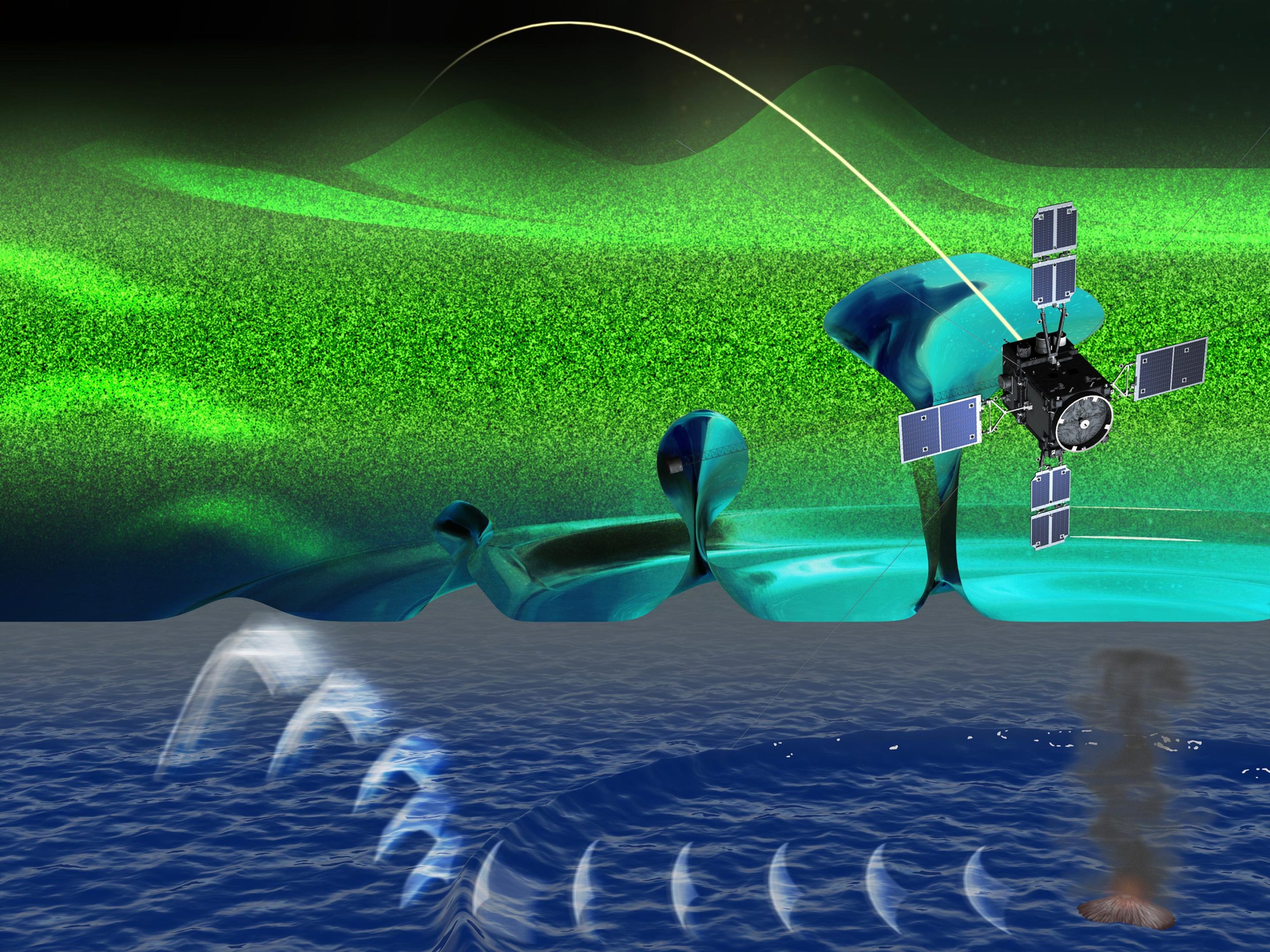
Tongan Volcano Powerfully Disrupted Satellite Signals In Space.
Share
A groundbreaking study has revealed that a powerful underwater volcanic eruption in 2022 had far-reaching consequences, disrupting radio communications in outer space. These findings not only have implications for mitigating disruptions to satellite and GPS systems on Earth but also provide insights into volcanic activities on extraterrestrial worlds.
In January 2022, the Hunga Tonga-Hunga Ha'apai submarine volcano, an imposing cone-shaped mountain situated near the Kingdom of Tonga's 169 islands in the South Pacific, experienced a violent explosion. This eruption unleashed the highest volcanic plume ever recorded, reaching an astonishing height of 57 kilometres. The cataclysmic event also triggered tsunamis that rippled as far as the Caribbean. Overall, this eruption stands as the most powerful natural explosion witnessed in over a century, rivalling the might of the largest nuclear bomb ever detonated by the United States.

Previous studies had already indicated that the atmospheric waves resulting from the eruption were potent enough to disturb the ionosphere—an upper layer of Earth's atmosphere extending from approximately 80 to 1,000 kilometres above the surface. The ionosphere, energized by solar radiation, contains electrically charged ions responsible for its unique properties.
Scientists had long speculated that volcanic activities could disrupt the F-region of the ionosphere, situated roughly 150 to 800 kilometres above the Earth's surface. This region possesses the highest concentration of ions within the atmosphere. Particularly in the equatorial areas of the ionosphere, the formation of voids known as "equatorial plasma bubbles" can hamper satellite communications and GPS signals. Researchers had pondered whether volcanic eruptions and other terrestrial events could generate these elusive plasma bubbles.
"Atmospheric plasma bubbles are rarely observed in the ionosphere," revealed Atsuki Shinbori, an atmospheric scientist at Nagoya University in Japan and the lead author of the study.

In this recent research, scientists employed Japan's Arase satellite to detect equatorial plasma bubbles, monitored atmospheric waves using the Himawari-8 satellite, and tracked ionospheric movements from ground-based stations.
The researchers made an intriguing discovery: following the impact of the shockwave generated by the Tonga eruption, they observed equatorial plasma bubbles "extending to space at an altitude of at least 2,000 kilometres," according to Shinbori. This phenomenon occurred at a much higher altitude than standard models had predicted.
Additionally, the scientists unexpectedly observed a rapid increase in electron density and a rise in the height of the ionosphere, hours before the initial arrival of the shockwave. The researchers proposed that this swift response might be attributed to the interaction between atmospheric waves from the eruption
You’ve come this far…
Why not venture a little further into A.S.S. - our exclusive Australian Space Society.
And keep thrusting Australia into the deep unknown…
#Space_Aus




